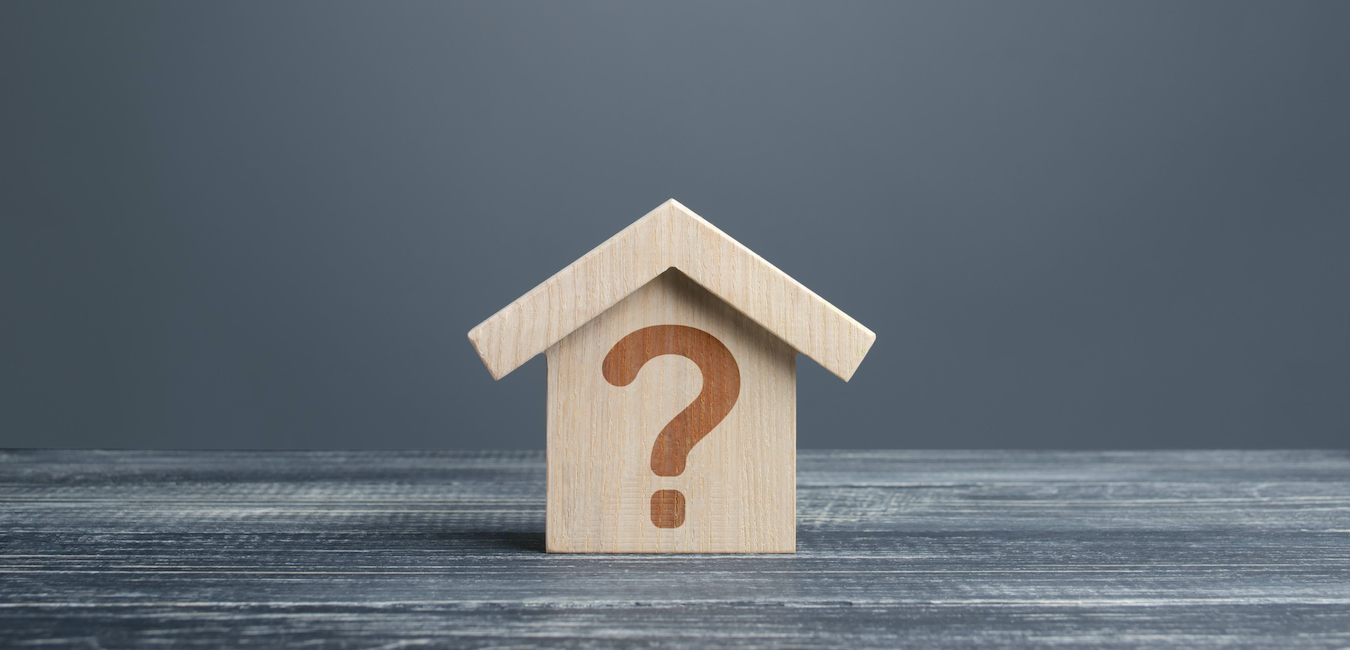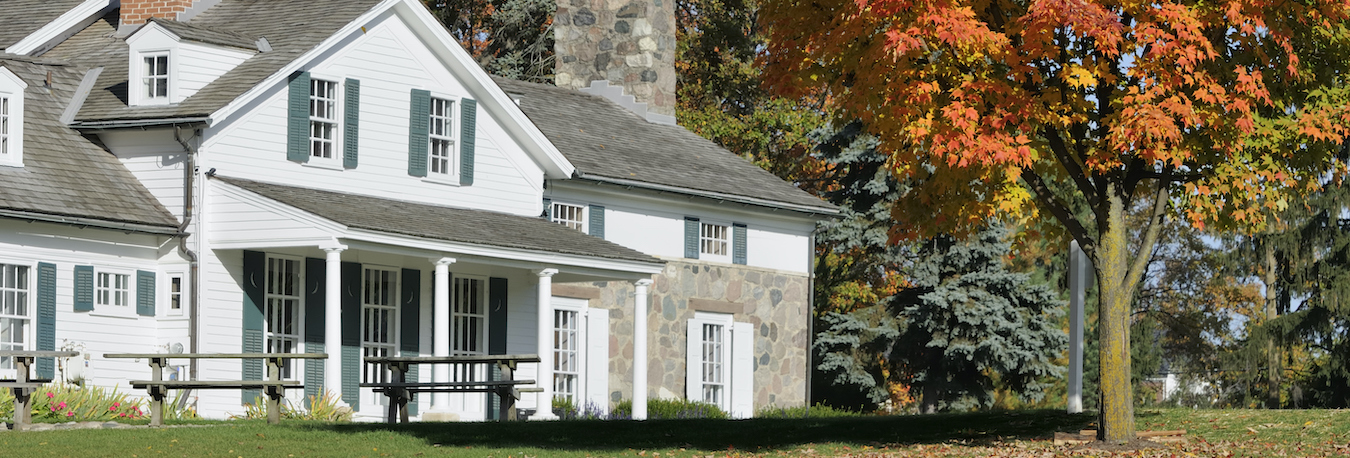Housing Market Predictions for 2023 + The Next 5 Years

The current U.S. housing market is anything but normal. Skyrocketing housing prices have made it increasingly difficult for many to buy a home, and yet there are plenty of buyers who are willing to pay inflated prices, perpetuating a continual cost increase. Shopping for a house is always a challenge, but today’s real estate prices make house hunting more difficult than ever.
A confluence of factors has led to this unprecedented rise in housing costs. Historically low mortgage rates made buying a home more appealing, and the COVID-19 pandemic prompted many Americans to relocate.
But the pandemic also made it difficult for homebuilders to keep up with the surge in demand. High material and labor costs, difficulty finding staff, and even zoning restrictions have slowed down the construction of new homes. It’s no wonder then, that the U.S. is about 4 million homes short of what’s needed.
>> Related Read: Pros and Cons of Buying a New Construction Home
With limited inventory and a large number of buyers, the demand for homes has grown and prices have increased. Bidding wars are the norm, and many buyers have started to forego important parts of the homebuying process, like home inspections, to make their bids more appealing to sellers.
The housing market can only continue on in this unusual state for so long. Therefore, one of the safest housing market predictions for 2023 and the next five years is that we are likely to see major changes—the question is when.
What Factors Cause a Housing Market to Crash?
While the housing market may reflect unprecedented competition and sky-high prices, those conditions can only be temporary. All signs indicate that we are in the midst of a housing bubble. When that bubble bursts, we could see major changes to the market—some positive, and some negative.
What Is a Housing Bubble?
A housing bubble, also called a real estate bubble, describes a situation where housing prices and demand are so inflated that the market can’t sustain itself. Eventually, that bubble bursts.
Housing bubbles are marked by rapid real estate prices. Those rapidly increasing prices have several causes. Limited supply, such as those limits created by price increases in building materials and difficulty finding construction employees, contribute to increased demand. Emotional buying also plays a role in price hikes, just like the emotional buying prompted by people rethinking where they want to live in the midst of the pandemic. These factors combine to create increased demand, just like we have right now. With limited home availability, that demand grows and drives up prices.
Longer periods of lower-than-average mortgage rates can also stimulate that demand. While those low rates are enticing for buyers, they are only making the demand for homes stronger.
The results of these factors are inflated real estate pricing and a market that is unsustainable. Buyers may feel that they need to match these top prices to get a home, and sellers may feel that they can ask for high prices and get them. Bubbles are more than just a hot real estate market where housing prices climb, though. If a bubble bursts, it can spell widespread effects throughout the economy and major trouble for homeowners and investors.
>> Related Read: How to Get a House in This Market (a HOT Seller’s Market)
What Happens When a Housing Bubble Bursts?
Most housing bubbles start to burst when mortgage rates begin to rise again. That single change often results in cascading effects throughout the real estate industry.
As rates rise, buying a house, especially at an inflated price point, becomes less appealing, and demand starts to drop. Home prices start to drop, in turn, and sellers may suddenly find that they cannot ask nearly the price that they could have just a month or two prior.
Those falling property values mean that home financing companies may find that they have issued mortgages for homes that are no longer worth close to what the seller owes on the home. Banks will often limit the new mortgages that they are willing to issue, making it more difficult for buyers to qualify for a mortgage. This can impact the demand for new homes again, since some of the sellers who are still working to purchase may be unable to qualify for a mortgage with those stricter demands.
Homeowners and investors may find themselves in trouble, too. If they overpaid for a home when prices were high, they may find that their home’s value is less than the value of their mortgage. This situation is called being underwater on a mortgage. Investors may be unable to recoup their money on the property, prompting them to either hold onto the house or sell it at a loss.
The 2008 housing bubble crisis is a prime example of this. Since 2000, the housing market had grown rapidly, with housing prices reaching their peak in 2006. In 2007, mortgage rates began to increase, and in late 2008, house prices dropped dramatically. When homeowners couldn’t pay back the mortgages on the inflated purchase prices, they defaulted and millions of homes went into foreclosure, contributing to the economic crisis called the Great Recession.
Different factors contributed to the crash of 2008 than the ones that we’re seeing now. The world was recovering from a mild recession after September 11, 2001. In response, the government deliberately cut mortgage rates and worked to sustain those lower rates to prompt economic activity. The technology bubble of the late 1990s had also burst, prompting investors to take their money out of technology stocks and put it into real estate, instead.
Plummeting rates and increased focus on buying real estate led to growing prices. In response, home financing companies relaxed their requirements, allowing buyers who wouldn’t normally qualify to get approved for mortgages. But when housing prices plummeted, the real estate sell-off led to foreclosures and mortgage defaults en masse.
Today’s housing bubble may have been caused by factors like the pandemic, staffing, and supply issues, but if prices rapidly drop, we could see the same effects as the 2008 crisis.
>> Related Read: How to Find Houses Before They Hit the Market
6 Housing Market Predictions for 2023 and Beyond
What will 2023 bring to the housing market? Whether you’re thinking of buying or selling a home, it’s important to consider these longer-term changes and how they might affect your plans.
1. A Slowdown in Housing Is Inevitable
The housing market’s current rate of growth is unsustainable. Home financiers have seen the effects of previous housing bubble bursts, and they are understandably cautious about these risks. As signs that the market is slowing emerge, financiers become concerned about liquidity. In response, they may limit mortgages, preferring to keep their money in-house rather than risk a mortgage default. If financiers do continue, they may implement stricter requirements to help minimize the risk that they assume each time they approve a mortgage.
That’s what happened in 2008, and we may start to see those issues again. Concerns around liquidity and stricter requirements may result in a situation where buyers are unable to get approved for mortgages, prompting prices to fall even more.
2. Rising Mortgage Rates May Force Some Buyers Out of the Market
While housing costs may be rapidly rising, household earnings are not. In fact, the U.S. Census Bureau reported that the median household income in 2020 was $67,521. That income had decreased by 2.9% when compared to the 2019 median income of $29,560. Many factors likely contributed to that decrease, including the unemployment prompted by the pandemic.
In contrast, according to Federal Reserve economic data, in the second quarter of 2022, the median sale price of a home in the U.S. was $440,300. Additionally, hyper-competitive bidding and buyers who are willing to waive contingencies like home inspections are pricing others out of the market.
3. Prices Have Surpassed Their Previous Peaks in Many Cities
The real estate market always fluctuates, but the current market greatly exceeds the usual fluctuations. According to Newsweek, data provided by Moody’s Analytics identifies 183 of the largest 413 regional housing markets as being overvalued. Those markets are overvalued by 25%, highlighting how homebuyers are paying unusually high prices for homes, which makes the process of finding and buying a home even more challenging.
That overvaluation poses problems for buyers now, and it could spell trouble for buyers once prices start to drop. High pricing makes it impossible for some buyers to buy a home, or it forces them to settle for a smaller house than they need. Some buyers choose to sit the market out altogether.
But buyers who get caught up in the hyper-competitive world of homebuying could find themselves overpaying for property. Buyers might take out a bigger mortgage than they can afford, and they might be left with an underwater mortgage if rates fall. Buying at these high prices is risky, particularly if buyers plan to sell their properties in the coming years.
>> Related Read: Understanding Mortgage Rates
4. The Mortgage Industry Will Remain Tight
While rates will climb and home prices will fall, the mortgage industry will remain tight in 2023 and over the next five years. That means that it will be more challenging for homebuyers to access home financing.
That’s not to say that homebuyers won’t have options, but they may need to be more persistent and do some work to prepare to apply for home financing. Building credit is a key element of that preparation, and it takes time.
Credit Karma reports that, in 2020 to 2022, the average credit score of buyers who opened a mortgage was 717, though average scores by state ranged from 683 to 739.
Individual home financing companies can have their own credit score requirements, and they will likely increase these requirements as the industry tightens up. Buyers may need to take the time to improve credit scores by establishing a history of on-time payments. Some buyers may ask a family member to co-sign a mortgage to get approval.
We will likely see an increased focus on the different types of mortgages available and their varying qualification requirements. Conventional mortgages can be particularly difficult to qualify for, especially for the self-employed, those who are refinancing, those buying a second home, and investors. In addition to increasing their credit score requirements, home financing companies may look for a higher debt-to-income ratio to confirm that the buyer is able to make their payments and may require larger down payments.
As a result, we may see increased interest in alternative types of mortgage products. First-time homebuyer offerings tend to be easier to qualify for. Islamic mortgages also offer an appealing alternative, which prevents the homebuyer from having to deal with an interest-bearing loan or an inequitable lender-borrower relationship.
>> Related Read: How Does a Co-Ownership Mortgage Work?
5. Mortgage Rates Will Continue to Creep Higher
Mortgage rates are still increasing from their 2020 lows. According to The New York Times, in July 2020, the 30-year fixed rate mortgage rate fell to under 3% for the first time. In January 2021, that rate fell to a record low of 2.65%.
Rates experienced a spike in 2022, climbing to 5.81% by June 2022. That 2.0% increase occurred in just six months and was partially prompted by the Federal Reserve’s federal funds rate target increases.
The increased mortgage rates can have several effects. They make home buying less appealing to those buyers who were drawn to the market by the temptation of a low mortgage rate. They also add on to the expense of buying a home, limiting the price points that are practical for many buyers. With fewer buyers able to purchase homes, home prices will drop. In fact, according to the National Association of Realtors, the national median existing-home price already dropped from $413,800 in June 2022 to $403,800 in July 2022.
6. More People Will Choose to Work Remotely to Lower Their Costs
Part of the demand for real estate was prompted by residents of several big cities relocating. Not only were larger cities particularly dangerous during the height of the COVID-19 pandemic because of close quarters heightening transmission risks, but many workplaces went remote. As a result, more workers could live and work anywhere.
That trend won’t end in the coming five years. The pandemic has prompted a workplace shift, with many employers now embracing remote or hybrid working arrangements. Additionally, many workers have left their jobs entirely, opting for self-employment opportunities that give them more flexibility in terms of scheduling and location.
Inflation has been driving up the cost of living, making it difficult for many to find the funds to cover commuting to a physical location, especially given that workplaces found ways to function remotely through the first two years of the pandemic. With remote work arrangements now being a practicality, we will continue to see workers opt for remote work.
>> Related Read: Working From Home Successfully
TL; DR – Housing Market Forecast for 2023 + The Next 5 Years
The housing bubble has transformed the real estate market and home-buying process. Factors like the pandemic have fueled housing demand, and low home financing rates have ignited unprecedented competition among potential home buyers. But with gradually increasing rates, home prices are starting to drop, and the bidding wars for homes are slowly dropping off, too.
If you’re looking to own a home in the near future, pre-qualify in fewer than 10 minutes with Guidance Residential to see what your options are in this market.




